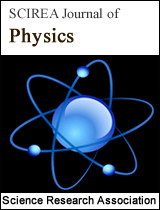A Novel Method to Prove the Visibility Distance of Candlelight and the Milky Way’s Vega Star and Apply this Knowledge to Outdoor Lighting Applications
DOI: 10.54647/physics140512 112 Downloads 14498 Views
Author(s)
Abstract
Understanding the human visual system’s night-time performance is essential for designing safe lighting for night-time travel. Visibility is a complex assessment process, but our current understanding of how the eye receives and processes light and how well the eye can distinguish objects in different lighting levels and distances are low. The current approach for calculating outdoor lighting level requirements is complicated and limited to illuminance and luminance measurements and does not allow designers to evaluate visibility. This paper aims to develop a simple outdoor lighting visibility calculation using the photons per second. This novel calculation method is applied to the candlelight's visibility distance and the milky way’s Vega star visibility to validate the calculation approach. This paper will help researchers, scientists, engineers, consultants, architects, lighting designers, and government agencies seeking to improve outdoor lighting for safety, health, well-being, and quality of life in the built environment.
Keywords
Outdoor Lighting, the human eye, visibility, Galaxies, Vega starlight, candlelight
Cite this paper
Uthayakaren (Uthayan) Thurairajah,
A Novel Method to Prove the Visibility Distance of Candlelight and the Milky Way’s Vega Star and Apply this Knowledge to Outdoor Lighting Applications
, SCIREA Journal of Physics.
Volume 8, Issue 1, February 2023 | PP. 1-18.
10.54647/physics140512
References
| [ 1 ] | Wolchover, N (2012) How Far Can the Human Eye See? Cited at: https://www.livescience.com/33895-human-eye.html. Accessed 5th March 2020 (available). |
| [ 2 ] | The Reflector, (2006) Luminous Intensity, Candela, Luminous Flux, And All That. Cited at: http://www.peterboroughastronomy.com/MembersOnly/Reflector/Issues/2006-01(January)-Vol.5%20No.1.pdf. Accessed 5th March 2020 (available). |
| [ 3 ] | MIT Technology Review, (2016). How far can the human eye see a candle flame? Cited at: https://www.technologyreview.com/s/539826/how-far-can-the-human-eye-see-a-candle-flame/. Accessed 5th March 2020 (available). |
| [ 4 ] | Healthline, (2019) How Far Can We See and Why? Cited at: https://www.healthline.com/health/how-far-can-the-human-eye-see#eyesight. Accessed 5th March 2020 (available). |
| [ 5 ] | Nivetha, S., et al. (2020) Bionic Eyes – An Artificial Vision. COMET 2019. Lecture Notes on Data Engineering and Communications Technologies, vol 35. Springer, Cham. Cite at: https://link.springer.com/chapter/10.1007/978-3-030-32150-5_113. Accessed 5th May 2022 (available). |
| [ 6 ] | Bennett, A (2012) Introduction to atmospheric visibility estimation. Cite at: www.biral.com/wp-content/uploads/2015/02/Introduction_to_visibility-v2-2.pdf. Accessed 5th May 2022 (available). |
| [ 7 ] | Holmes, R (2019) Seeing the quantum: The human eye is a surprisingly good photon detector. What can it spy of the line between the quantum and classical worlds? Cite at: https://aeon.co/essays/an-eye-on-experiments-that-make-quantum-mechanics-visible. Accessed 5th May 2022 (available). |
| [ 8 ] | Pugh, N. E., (2018) The discovery of the ability of rod photoreceptors to signal single photons. Cited at: https://rupress.org/jgp/article/150/3/383/43686/The-discovery-of-the-ability-of-rod-photoreceptors. Accessed 5th March 2020 (available). |
| [ 9 ] | Tinsley, J., et al. (2016) Direct detection of a single photon by humans. Nat Commun 7, 12172 (2016). Cited at: https://doi.org/10.1038/ncomms12172. Accessed 5th May 2022 (available). |
| [ 10 ] | Vaziri A (2016) Human eye sees single photons. Cite at: https://www.nature.com/articles/535469b. Accessed 5th May 2022 (available). |
| [ 11 ] | Nogues, G., et al. (1999) Seeing a single photon without destroying it. Cited at: https://www.nature.com/articles/22275. Accessed 5th March 2020 (available). |
| [ 12 ] | Gibbs, P (1996) Can a Human See a Single Photon? Cited at: http://math.ucr.edu/home/-baez/physics/Quantum/see_a_photon.html. Accessed 5th March 2020 (available). |
| [ 13 ] | Holmes, R (2016) Seeing single photons. Cite at: chrome-extension://efaidnbmnnnibpcajpcglclefindmkaj/http://research.physics.illinois.edu/QI/Photonics/pdf/PWDec16Holmes.pdf. Accessed 5th May 2022 (available). |
| [ 14 ] | Palum, R (2002) How Many Photons are There? Cited at: http://www.imaging.org/site/PDFS/-Papers/2002/PICS-0-267/7120.pdf. Accessed 5th March 2020 (available). |
| [ 15 ] | McCulloch, D.L., Hamilton, R. (2010) Essentials of photometry for clinical electrophysiology of vision. Doc Ophthalmol 121, 77–84. Cited at: https://doi.org/10.1007/s10633-010-9233-2. Accessed 5th March 2020 (available). |
| [ 16 ] | Technology UK, (2020) Luminous Intensity and Photometry Cited at: http://www.technologyuk.net/-science/measurement-and-units/luminous-intensity-and-photometry.shtml. Accessed 5th March 2020 (available). |
| [ 17 ] | Thurairajah, U (2022) A Comparative Study: The Benefits of a Novel Illuminance Calculation Method over Luminance Calculation Method for Optimal Roadway Lighting Design Applications. Cited at: https://iopscience.iop.org/article/10.1088/1742-6596/2224/1/012117. Accessed 5th May 2022 (available). |
| [ 18 ] | IES RP-8, (2021), Recommended Practice for Lighting Roadway and Parking Facilities, ANSI/IES RP-8-21. Cited at: https://store.ies.org/product/rp-8-21-lighting-roadway-and-parking-facilities/. Accessed 5th May 2021 (available). |
| [ 19 ] | Netburn, D (2016) The human eye can detect a single photon, study finds. Cited at: https://www.latimes.com/science/sciencenow/la-sci-sn-human-eye-photon-20160719-snap-story.html. Accessed 5th March 2020 (available). |
| [ 20 ] | Nogues, G., et al. (1999) Rauschenbeutel, A., Osnaghi, S. et al. Seeing a single photon without destroying it. Nature 400, 239–242. Cited at: https://doi.org/10.1038/22275. Accessed 5th May 2022 (available). |
| [ 21 ] | Burke R. (2019). The longest sightline on Earth. Cited at: https://calgaryvisioncentre.com-/news/2017/6/23/tdgft1bsbdlm8496ov7tn73kr0ci1q. Accessed 5th March 2020 (available). |

